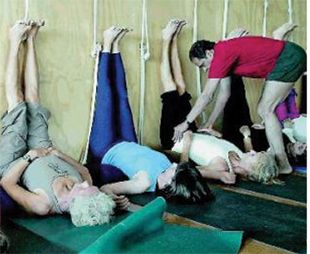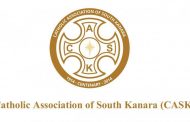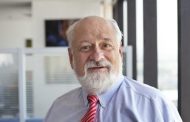Father Joe Pereira is a priest, a student of BKS Iyengar, and a teacher of yoga to addicts to help them cope better with rehabilitation therapy
In his early days as a priest, people knew Father Joe Pereira from Mumbai as the singing priest. His deep bass voice and love for music, led him to attend a performance in Mumbai of the internationally renowned violin virtuoso, Yehudi Menuhin. Menuhin’s own interest in Eastern arts, led him to play with sitar maestro Ravi Shankar, and to write the foreword to the BKS Iyengar classic, Light on Yoga. At the performance, Menuhin’s introduction of Iyengar as ‘my next violin instructor,’ piqued the young priest’s interest. He soon began taking weekly classes from Iyengar near his Mumbai parish.
That was in 1968. By 1971, Father Joe was teaching yoga. In 1975, he became a certified Iyengar instructor. He incorporated hatha yoga and meditation into his pastoral duties, and eventually added a ministry for alcoholics to the parish’s services.
Initially, the church did not favour his teaching yoga for any purpose. “My vicar-general was very concerned about my yoga,” Father Joe recalls. “One day he had to go to a doctor for surgery to remove his varicose veins. The doctor told him, ‘If you go to this priest I know, who teaches yoga, you won’t need surgery.’ Mother Teresa, too, did not seem too happy with the situation. She asked him, “What is this yoga that you are teaching to my nuns?” Father Joe explained that the nuns worked so hard that they fell asleep during their prayers. Yoga helped them cope better with their tiredness, and stay alert. He introduced them to simple yogic breathing, and Benedictine mantras.
Father Joe adds, “Today I get a lot of support from the church. I must acknowledge that it is a conversion of sorts.” He attributes his ability to be unconventional, to his mother. She was one of the first graduates in the country, while his father was not, and was four years younger.
Father Joe is far more than just a healthy and fit Bombay priest, who does not look his 50-odd years. His story and his presence are one of those unique products of India, innately spiritual, and embracing the fluidity that moves between traditions, while staying true to one main path. He ambles easily between cultures verbally. He quotes a Sanskrit phrase of meditation, refers to a speech at a Cambridge University conference on the use of yoga for drug rehabilitation, and shares his love of Mother Teresa. Beyond the story of a priest teaching yoga, there is a deeper more compelling one of healing the poor, and being open to those most in need.
His yoga practice has taken him on a personal healing journey, as well as a charitable one. “I had two serious accidents and needed surgery three times on my legs.
Now I can sit in full lotus position and do all my exercises. I do not have any memory of them.” In 1997, 17 years after those perations, Father Joe needed remedial work on his spine. He was fortunate to be able to meet Iyengar personally every two to three weeks.
Iyengar devised a special programme for him of 26 exercises, ‘each more painful than the last’. After a year and a half of the exercises, there is no pain. “That is Iyengar. You trust the process.”
In 1971, Father Joe approached Mother Teresa. He was having a crisis of faith. After the seminary years, well protected from temptations of the world, he fell in love. As part of the generation of priests after the Vatican Council, he was frustrated with the progress of change. “I was in a hurry to change the church.” He approached Mother Teresa and asked her to pray for him. “I do not pray for priests, I pray with them”, she said and together they prayed, Father Joe crying like a child. “Don’t quit,” she said, “the Lord has work for you.” She added that it might take 10 years or more.
Ten years later in 1981, he and one of the recovering alcoholics he had brought into the parish programme founded the Kripa (“Grace”) Foundation. It focused on serving addicts through a unique recovery programme, combining the ‘12 steps’ of Alcoholics Anonymous with instruction in yoga and meditation taught by Father Joe. Eventually, he added western psychological models, such as dyads and gestalt therapy, and Christian Meditation launched by Irish Benedictine Fr. John Main. Christian Meditation consists of repeating the mantra Maranatha (Come, Lord) for half an hour, twice a day.
From its humble origins in the annex of the parish church in Mumbai, the programme has grown. It includes more than 30 counselling, detoxification, and rehabilitation centres throughout India, and offices in Germany and Canada. The recovery rate of the programme is an astonishing 65 per cent.
For Father Joe, this work was perhaps the most fitting byproduct of his own spiritual journey. He struggled with alcohol abuse himself as a young man. “I have all the qualities of an addict,” he says. “I am not exempt from the self-destructive behaviour patterns people come here to be healed of.” Father Joe’s collegial relationship with Iyengar (he returns to the latter’s institute in Pune every July for intensive studies in yoga therapy), led him to ask Iyengar to devise practice techniques and sequences (of asana and pranayama), specifically, to help people cope with addictive traits and residues.
Eventually this led him to taking drug addicts from Mother Teresa’s Missionaries of Charity. As a result, he was offered the Boys Town on Diamond Harbour Road in Kolkata. Instead of three addicts, he was attending to 250 a year. “Mother was thrilled,” that such a thing was possible. As addicts recovered, they went back to their own states and new centres were set up. Soon there were centres in Delhi, Goa and all seven of the North Eastern states, totalling 31. Now he wishes to work in the largest slum in SE Asia, Dharavi in Bombay. Before that, he had been invited to work in the North East of India, in the states known as the ‘seven sisters’. “We started helping those with HIV+ and Aids. Ten years ago, they were thrown in jail for having Aids, and food was thrown through the bars, to avoid contact”.
Now he wishes to build Aids hospices, and more drug rehabilitation clinics, in India. Forty per cent of his funds are from the Ministry of Social Justice and Empowerment.
He helped 150 drug pushers find other jobs and gave 50 sewing machines to their wives to offer alternative employment recently. He continues to practise, and preach mainly through the Missionaries of Charity. Mother Teresa inaugurated his centres in Mumbai and Kolkata. She had asked him to give a talk at retreats for her nuns. It seems like the mantle from Mother Teresa has fallen to a degree on his shoulders. As he said to his superiors when he first applied to set up his rehabilitation centres, “We cannot let Mother Teresa have a monopoly on this work!”
So how can one deepen one’s faith and spiritual practice? He quotes Iyengar saying, ‘Holiness is wholeness’. “Sometimes this leads to your being out of control. You really go through a period where you can see two levels of existence. Finally, one comes to live by faith alone. The more you learn to let go, the more you are in tune with the present. The struggle comes when you forget this, and try to control life, which brings stress.”
Sometimes he has encountered problems with fundamentalists within the Church. “Oh those fundamentalists, they are always seeing the devil on my shoulder,” he jokes. In his mind, “Jesus is the supreme Yogi because he said the Father and I are one, and yoga means yug = union = one.”
He says, “For all those interested in inculcating the values of this special field, and practising and teaching yoga therapy to addicts, I present an outline of the yoga workout thatis programmed within the Kripa Model of Recovery. I present the first two phases of practice. Phase I is at the primary care level and Phase II is practised at the after-care level of treatment.
“Phase I consists of postures that are called ‘restorative’ and are done with the help of a bolster. The purpose of such a prop is to induce the patient to honour and affirm the body. During the active days of addiction, it is the body which has been badly abused. This initial phase helps to reverse the process by ‘loving the body into life’. The patient eventually recognises the body as the very temple of God. This set of postures, reduces the need of dependence on medications and conditions the person to set himself on the path of wholeness and holiness.
“Phase II leads the person to ‘communicate’ with the various systems of the body thus ‘rejuvenating’ them. This calls for ‘tapas’, austerity brought about by a structured time management at the Kripa Rehabilitation Centres. It is necessary that the one who leads the group is a practising Iyengar Yoga Instructor, and that he/she is quite transparent in upholding the spirit of dedication and commitment to this special work of God.”
Courtesy : Life Positive




